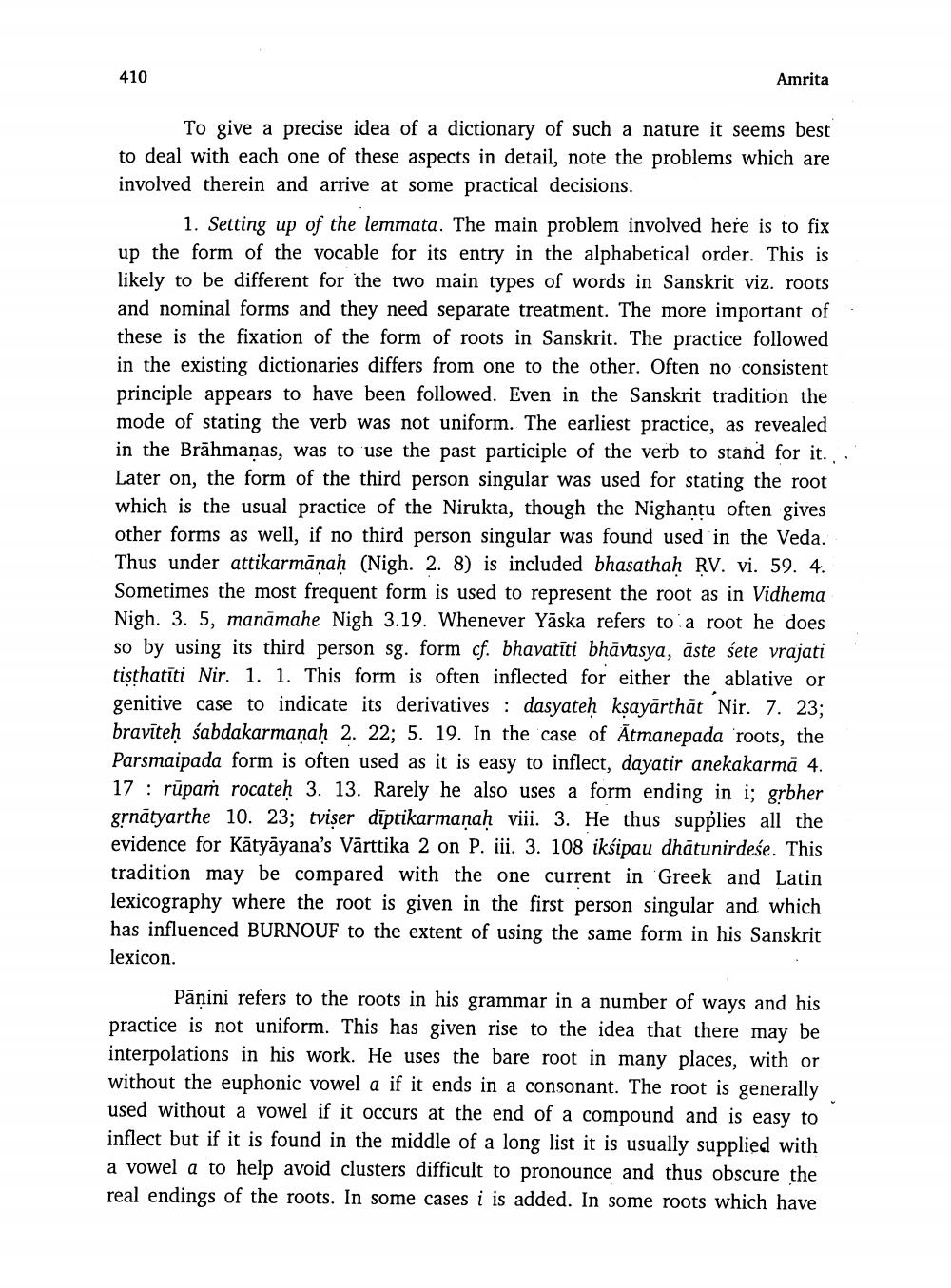________________
410
Amrita
To give a precise idea of a dictionary of such a nature it seems best to deal with each one of these aspects in detail, note the problems which are involved therein and arrive at some practical decisions.
1. Setting up of the lemmata. The main problem involved here is to fix up the form of the vocable for its entry in the alphabetical order. This is likely to be different for the two main types of words in Sanskrit viz. ro and nominal forms and they need separate treatment. The more important of these is the fixation of the form of roots in Sanskrit. The practice followed in the existing dictionaries differs from one to the other. Often no consistent principle appears to have been followed. Even in the Sanskrit tradition the mode of stating the verb was not uniform. The earliest practice, as revealed in the Brāhmanas, was to use the past participle of the verb to stand for it. Later on, the form of the third person singular was used for stating the root which is the usual practice of the Nirukta, though the Nighantu often gives other forms as well, if no third person singular was found used in the Veda. Thus under attikarmānah (Nigh. 2. 8) is included bhasathah RV. vi. 59. 4. Sometimes the most frequent form is used to represent the root as in Vidhema Nigh. 3. 5, manāmahe Nigh 3.19. Whenever Yāska refers to a root he does so by using its third person sg. form cf. bhavatīti bhāvasya, áste sete vrajati tisthatīti Nir. 1. 1. This form is often inflected for either the ablative or genitive case to indicate its derivatives : dasyateh ksayārthāt Nir. 7. 23; bravīteh sabdakarmanah 2. 22; 5. 19. In the case of Ātmanepada roots, the Parsmaipada form is often used as it is easy to inflect, dayatir anekakarmā 4. 17 : rūpam rocateh 3. 13. Rarely he also uses a form ending in i; grbher grnātyarthe 10. 23; tviser dīptikarmanah viii. 3. He thus supplies all the evidence for Kātyāyana's Vārttika 2 on P. iii. 3. 108 ikśipau dhātunirdese. This tradition may be compared with the one current in Greek and Latin lexicography where the root is given in the first person singular and which has influenced BURNOUF to the extent of using the same form in his Sanskrit lexicon
Pāṇini refers to the roots in his grammar in a number of ways and his practice is not uniform. This has given rise to the idea that there may be interpolations in his work. He uses the bare root in many places, with or without the euphonic vowel a if it ends in a consonant. The root is generally used without a vowel if it occurs at the end of a compound and is easy to inflect but if it is found in the middle of a long list it is usually supplied with a vowel a to help avoid clusters difficult to pronounce and thus obscure the real endings of the roots. In some cases i is added. In some roots which have




